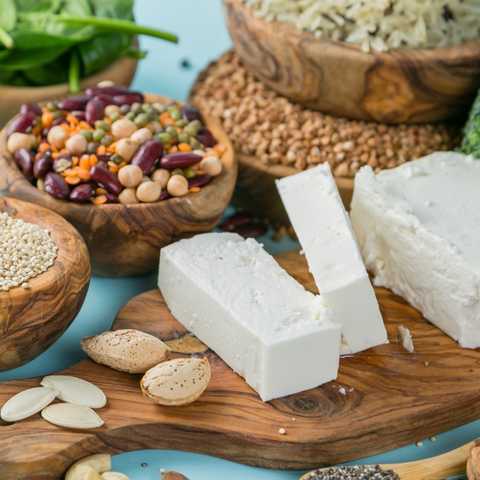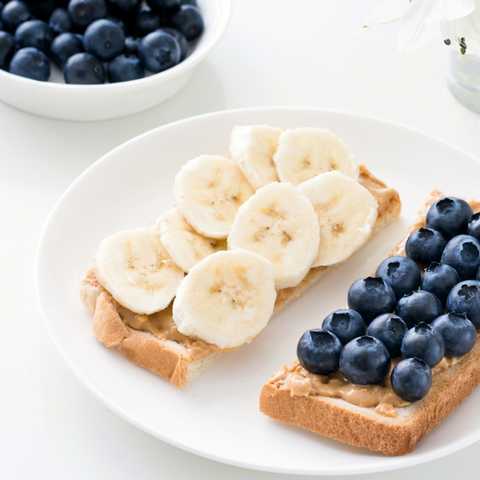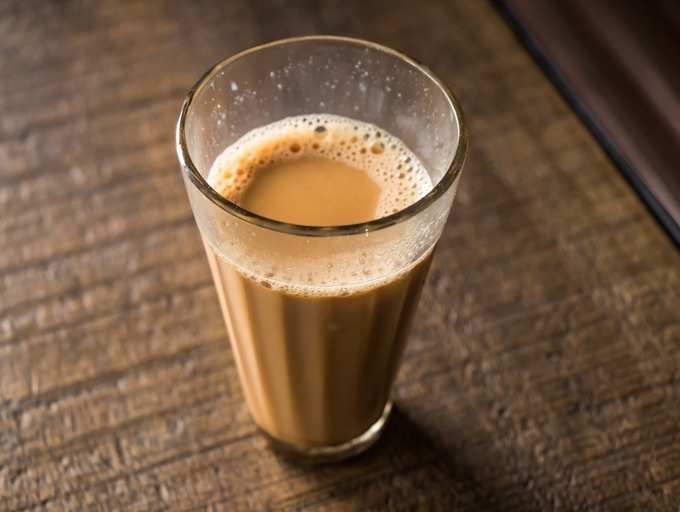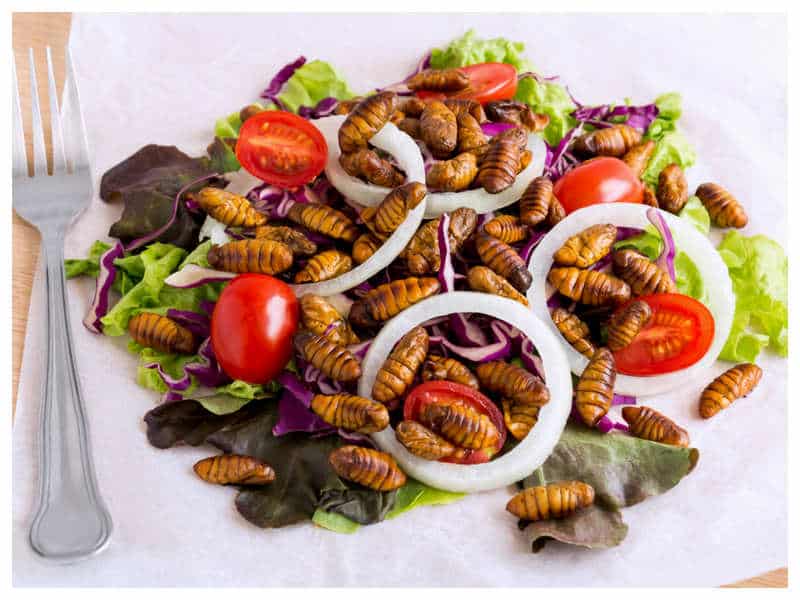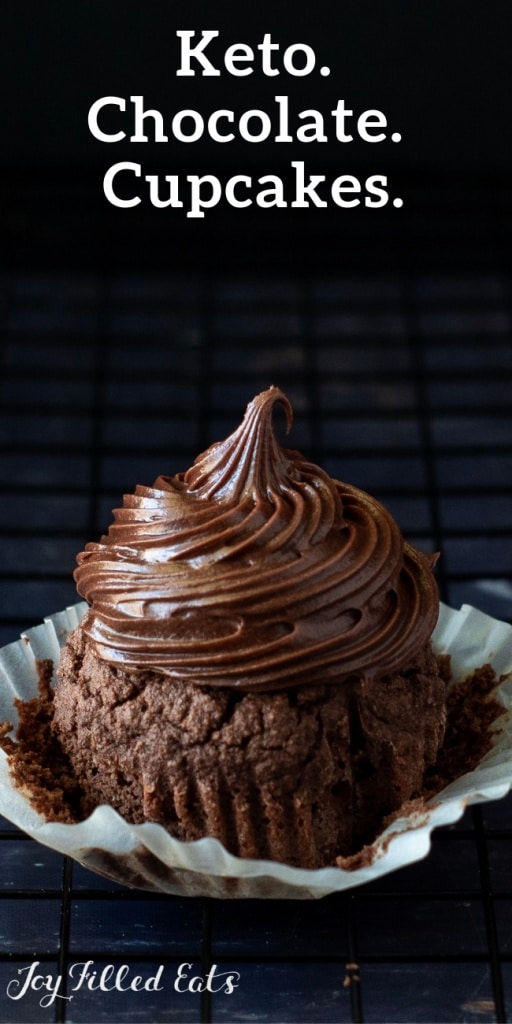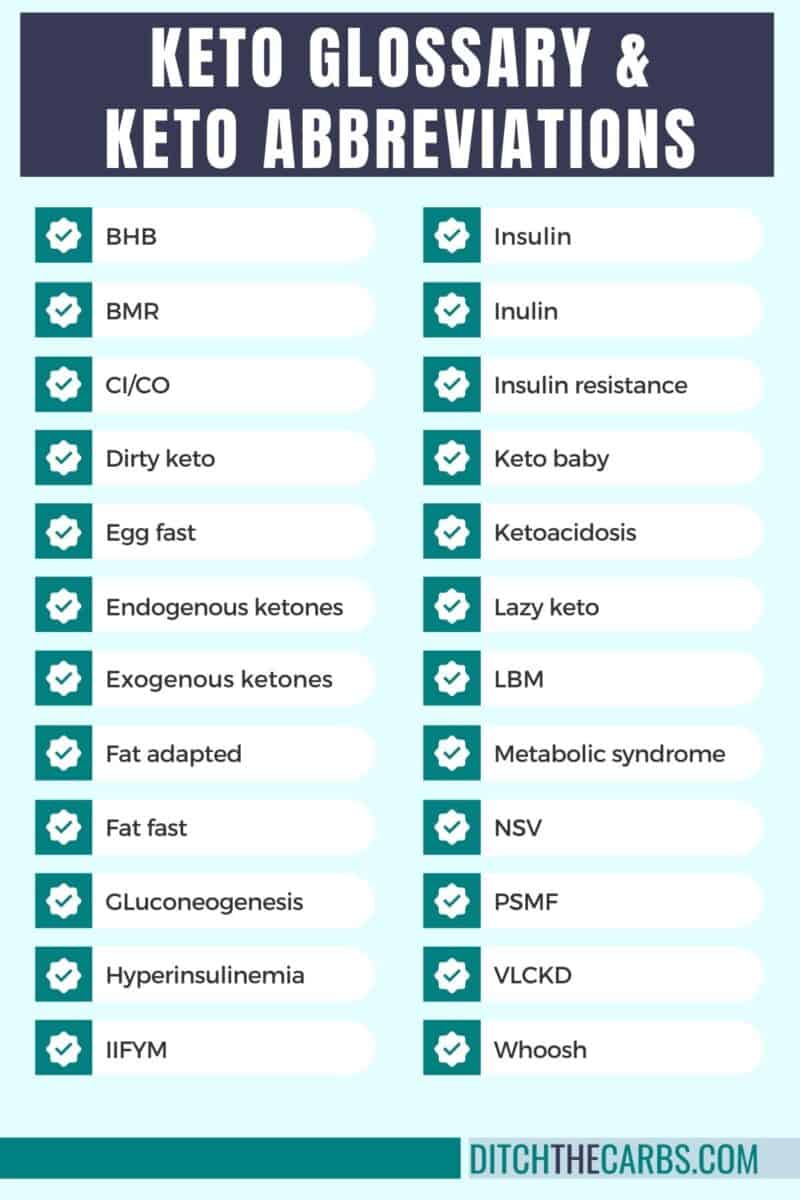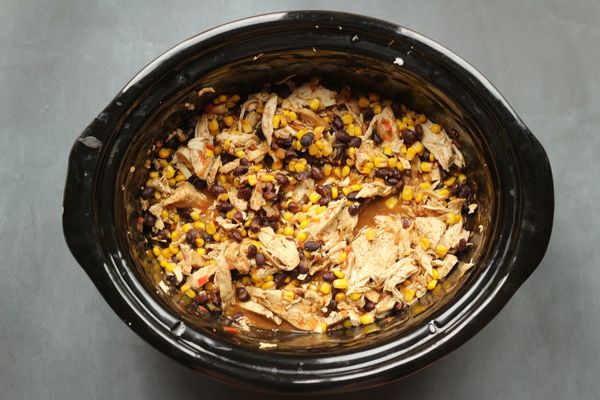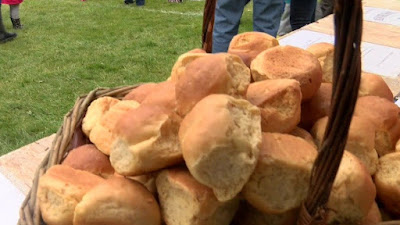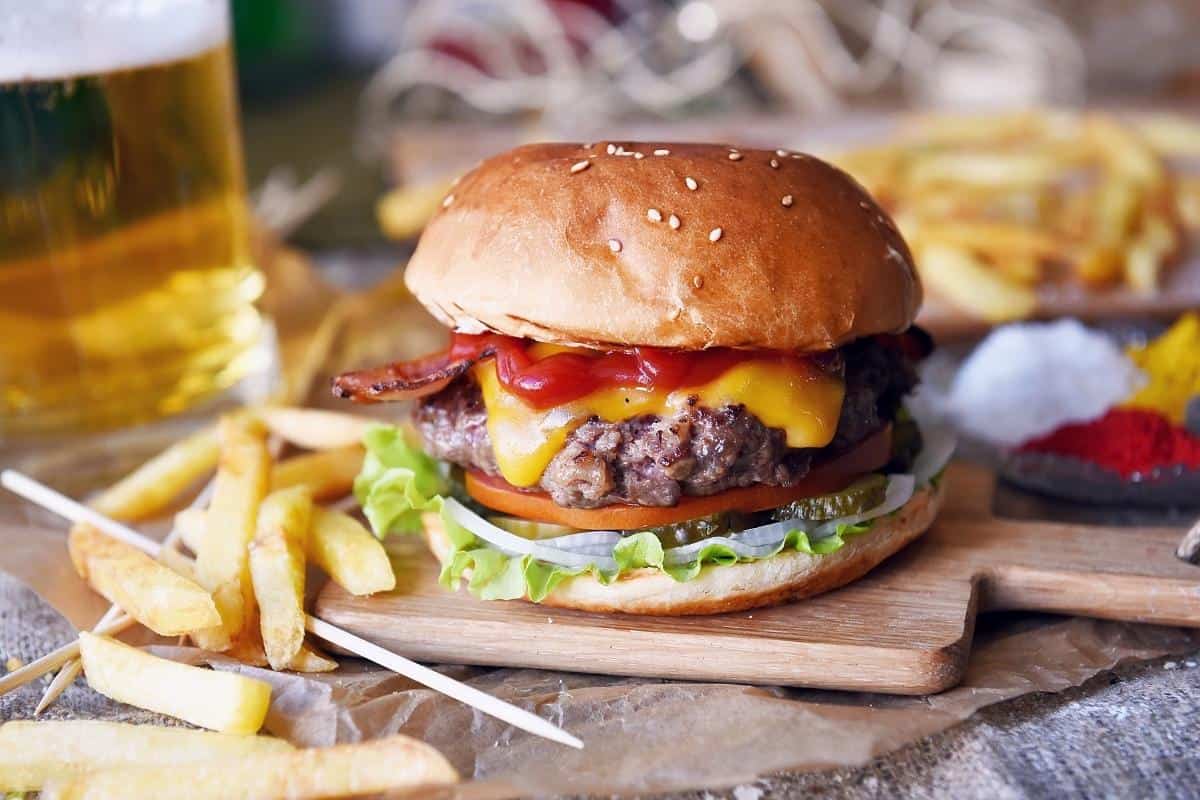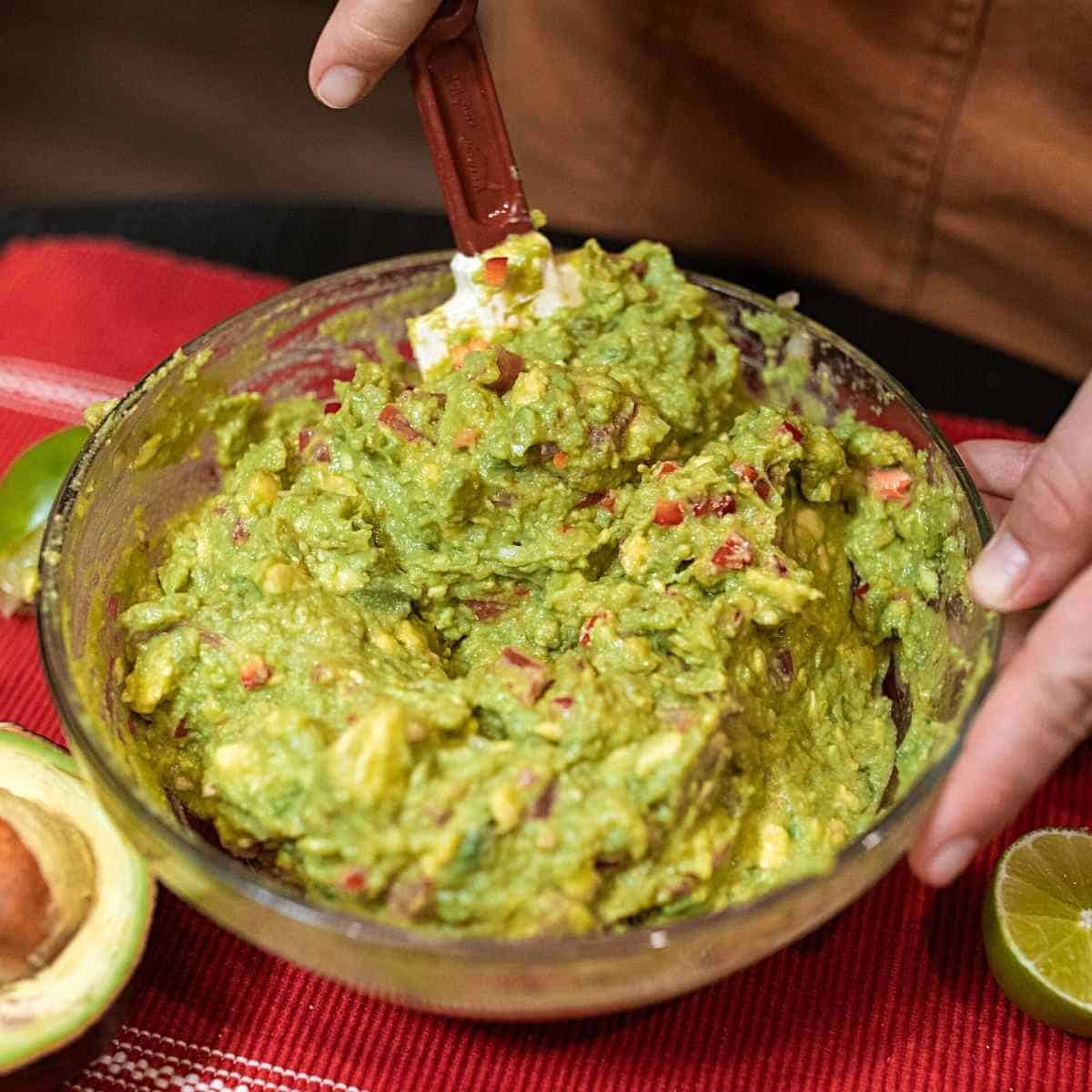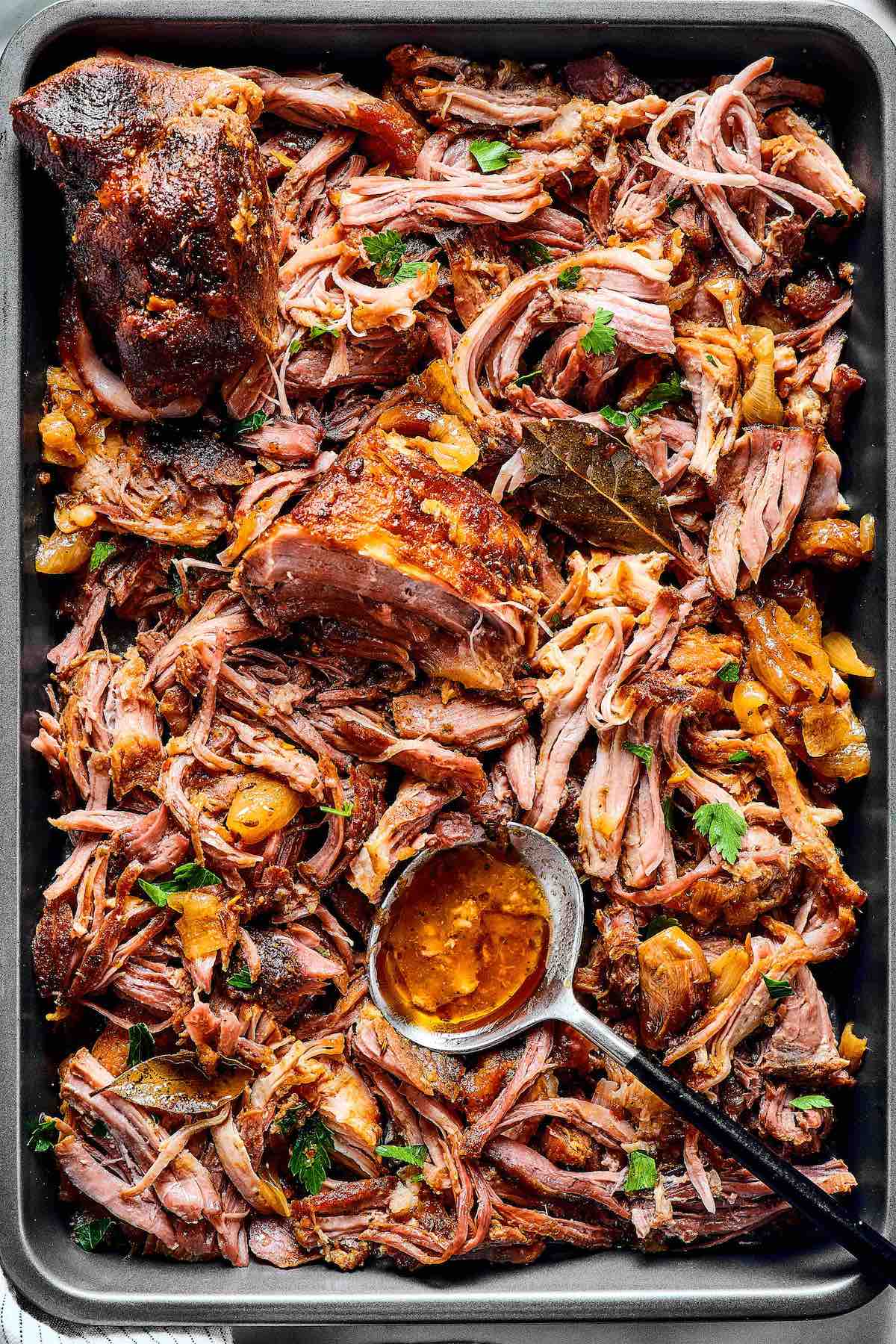Regardless of whether you’re team meat or team plants, the carnivore diet is a real thing. And with thousands of practitioners and nutrition gurus claiming health benefits ranging from building muscle and losing fat to improving gut health and fixing joint pain, it’s worth looking at.
Over the past few years, the carnivore diet has exploded, making it seem as though it’s an entirely new diet plan. But in reality, the concept of meat-centered diets has been around for decades.
The main difference these days is social media plays a massive role in bringing the idea to the masses. What was once a niche concept is now all over the internet.
So what is the carnivore diet? And more importantly, can it help you reach your goals?
Keep reading to learn everything you need to know about following a carnivore diet. And if it sounds intriguing, you’re in luck, as we are about to discuss a 7-day carnivore diet meal plan for both muscle-building and weight-loss goals!
Table of Contents:
- What Is The Carnivore Diet Meal Plan?
- What Can You Eat On The Carnivore Diet Meal Plan?
- What Should You Avoid Eating On The Carnivore Diet Meal Plan?
- Benefits of the Carnivore Diet
- Potential Carnivore Diet Risks
- Supplements To Take On The Carnivore Diet Meal Plan
- Your Daily Macros And Calories On The Carnivore Diet Meal plan
- Your 7-Day Carnivore Diet Meal Plan For Muscle Building
- Your 7-Day Carnivore Diet Meal Plan For Weight Loss
- What To Do After Following These 7-Day Carnivore Diet Meal Plans
- Tips For Getting Through The First Month Of The Carnivore Diet
- FAQs
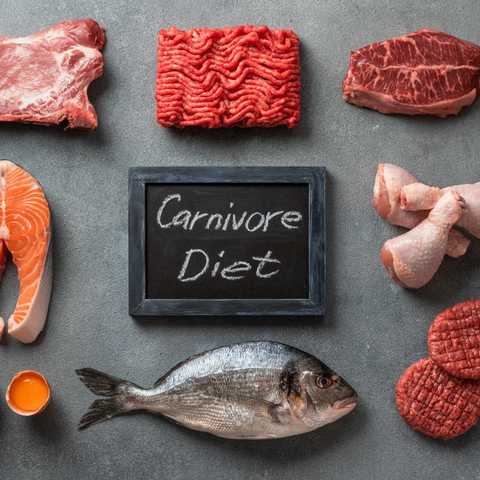
What is the Carnivore Diet Meal Plan?
The carnivore diet is exactly what the name implies: It’s a diet in which you eat meat. The premise is only to eat food from animals, so essentially the opposite of a vegan diet.
The carnivore diet gained popularity in recent years when podcaster Joe Rogan had Dr. Shawn Baker and Paul Saladino on his show. Rogan followed the diet himself and promoted it to his audience. In addition, Baker and Saladino continue to create content on the subject, and both wrote popular carnivore books.
On the surface, a diet in which you eat only meat seems extreme. But it’s important to understand that it is an elimination diet. You will not follow the carnivore diet for the rest of your life. After strictly following the diet for 2-3 months, you can start adding non-problematic foods to your meal plan.
Since there are few carbohydrates in a carnivore diet, it is very similar to a keto diet. In fact, many people set the diet up as a keto carnivore diet by keeping protein moderate and consuming a more significant percentage of their calories from fat.
What Can You Eat on the Carnivore Diet Meal Plan?
The carnivore diet is a simple meal plan to follow. In general, if the food comes from an animal, you can eat it. Beef, bison, elk, venison, lamb, chicken, turkey, fish, shellfish, eggs, lard, bone marrow, bone broth, and organ meat are all animal foods that are fair game. Limit processed meats like pepperoni, sausage, and hot dogs, and when possible, eat grass fed meat.
Although the diet is straightforward, there are a few gray areas.
Animal products such as butter and ghee are almost always allowed, but other dairies are not. On the carnivore diet, stick to low-lactose dairy, things like hard cheese (cheddar, Swiss, parmesan), yogurt, and kefir. Some practitioners choose to have non-bovine (meaning products that don’t come from cows and buffaloes) milk products, like goat milk and goat milk yogurt.
In addition, products like beef tallow, which is beef fat that has been cooked down, resulting in the impurities being removed, is highly encouraged on the carnivore diet as it is high in nutrients and a good energy source.
If you feel bad when you have dairy, keep it out of your diet. But if not, a small amount of low-lactose dairy is acceptable. Plus, research shows people who eat dairy during a calorie-restricted diet lose more fat and maintain more muscle1.
Another topic for debate is coffee and tea. Although coffee and tea are plant products, they are allowed on some carnivore diets. Spices and seasonings are allowed, so feel free to use them to add flavor to your meat.
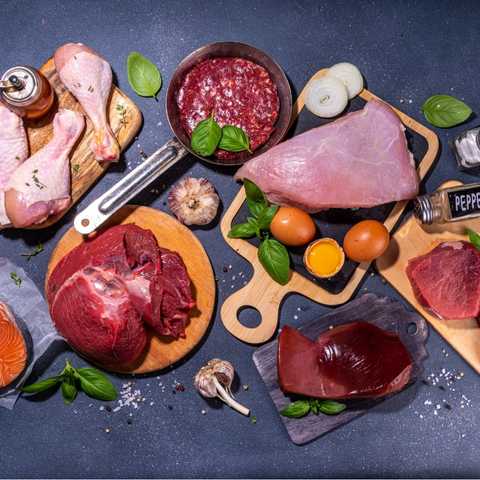
What Should You Avoid Eating on the Carnivore Diet Meal Plan?
The carnivore diet might be right up your alley if you hate vegetables and plant foods.
In fact, there are no plant-based foods in the diet at all, as it excludes fruits, vegetables and veggie proteins, legumes, grains, nuts, and seeds. No vegetable oils are allowed, either.
The carnivore diet is an elimination diet, so the goal is to remove anything that might be problematic.
3 Benefits of the Carnivore Diet
In totality, there is not much research on the benefits of a carnivore diet. However, there are a few perks that we know of.
1) Supports Weight Loss:
The goal of carnivore diet meals is not to shed pounds and reduce body fat, but many people lose weight while on a carnivore diet. The reason for the diet aiding in improved body composition is twofold.
One, meat is highly satiating. People eat less on a carnivore diet because they are not as hungry. Additionally, when you cut out all food that is not animal-based, including processed foods, it limits options for snacking.
2) Provides An Abundance of High-Quality Protein:
By nearly every measure, meat and other animal foods are the highest quality protein sources we can consume2.
Animal protein sources are high in essential amino acids, highly bioavailable, digest well, and score high on the protein efficiency ratio. Similar to a keto diet, when you follow a carnivore diet, you get plenty of high-quality protein, which is great for maintaining and building muscle mass.
3) Eliminates All Potentially Problematic Foods:
A benefit of elimination diets like the carnivore diet is it removes many problematic foods.
Sometimes food may not digest and assimilate well with specific individuals, but they continue eating it because they don’t realize it’s an issue until it is removed.
This follows a similar premise to the Whole30 meal plan (although the foods you can consume are different), as it is designed to help you identify potential food sensitivities.

Potential Carnivore Diet Risks
The most significant risk of following the carnivore diet is heart disease. Many types of animal meats, like steak, for example, are high in saturated fat and associated with an elevated risk of coronary heart disease3. Above all else, this is why a carnivore diet might not be a tremendous lifelong dieting strategy.
Additionally, fruits and vegetables contain vitamins, minerals, and fiber and play an important role in a healthy diet. Excluding them from your diet creates a potential for nutritional deficiencies forcing you to rely on supplements to fill in dietary gaps.
Lastly, the carnivore diet is highly restrictive. Only eating animal products can put a strain on your social life. Eating at restaurants, traveling, or at events where you only eat meat is hard.
4 Supplements To Consider Taking on the Carnivore Diet
A well-balanced carnivore diet with red meat, liver, salmon, eggs, and a little bit of low-lactose dairy will cover most of your nutritional needs, ensuring you get the right amount of protein and healthy fats.
But, to cover all of your bases and fill in the gaps, a few supplements make sense.
1) Magnesium:
Magnesium is a critical mineral for many bodily functions. A lack of magnesium in the diet can lead to muscle cramps and elevated blood pressure. It is found in leafy greens, legumes, whole grains, nuts, and seeds.
Since none of those foods are allowed on a carnivore diet, taking 250-450mg of a magnesium supplement daily is a good idea. The best forms are citrate, glycinate, lactate, and malate. It’s important to know that magnesium citrate in high doses can have a laxative effect.
2) Vitamin C:
Vitamin C is a popular supplement for its immune benefits. It is found in oranges, kiwis, bell peppers, strawberries, and tomatoes.
There are limited animal-based vitamin C sources, so while on a carnivore diet, supplement with 75-100mg daily.
3) Daily Multivitamin:
You can get many other vitamins from a carnivore diet, but the amounts will likely be low if you are not careful.
These include Vitamins A, E, and K. To cover all your bases, it’s a good idea to take a daily multivitamin supplement.
4) Fiber:
Fiber is controversial in the carnivore world, as many practitioners claim you don’t need it. That said, if you find the lack of fiber in your diet is causing problems, you can always add a fiber supplement as you go.

Your Daily Macros & Calories on the Carnivore Diet Meal Plan
Determining calories and macros for a carnivore diet differs from other diets like keto, paleo, or Whole30. Remember, on a carnivore diet, you’re not even aiming for a low carb diet. You’re targeting no carb. Since there are only trace amounts of carbohydrates, you only need to track calories and protein.
Calorie needs are specific to each individual based on daily activity, body weight, and composition. The first step is finding how many calories are needed to maintain your body weight, also called total daily energy expenditure (TDEE). The simplest way to find TDEE is by multiplying your body weight by 14 to 16.
For example, a moderately active 150 pound individual can calculate their TDEE using the following formula: 150 x 15 = 2250
Theoretically, the 150-pound person would maintain their body weight by eating 2250 calories. You can bump calories up or down from there based on your goals. After figuring out how many calories you need, all that is left is calculating how much protein to eat.
Determining how much protein to eat doesn’t require a formula. Current research suggests eating between .7-1g of protein per pound of body weight is best for building and maintaining muscle4.
In our example, a 150-pound person should aim for between 105 and 150 grams of protein daily. The rest of the calories should come from fat.
We’re about to get into calories for both muscle building and weight loss, but before we do, we want you to be aware that everyone’s caloric needs are slightly different. Use these equations as a starting point, monitor your weight week to week, and tweak your numbers as needed.
Calories & Macros For Muscle Gain:
To build muscle, you must eat more calories than your body requires to maintain weight. The question is, how much? A small to moderate calorie surplus is all that is needed. An additional 15-20% calories above TDEE will get the job done.
Returning to our previous example, adding 15% to 2250 calories would result in an extra 340 calories. Therefore, an excellent bulking diet for a 150-pound person would be 2590 calories.
Protein contains four calories per gram. So, a protein intake of 150 grams would equal 600 calories, leaving 1990 calories for fat. Fat contains nine calories per gram, so for this diet, around 220 grams will come from fat.
Calories & Macros For Weight Loss:
Contrary to building muscle, you must reduce calories for weight loss. Weight loss requires subtracting calories from TDEE.
The trick is finding the correct amount of calories to subtract. If you reduce calories by too much, it can make the diet harder than it has to be. On the other hand, if you don’t subtract enough calories, weight loss will be prolonged.
For most people, losing one pound weekly is a great place to start. Since a pound of fat is about 3500 calories, you need to create a weekly deficit of 3500 calories to lose a pound per week. A deficit of 3500 calories spread across seven days equates to a 500-calorie deficit per day.
In our example, when subtracting 500 calories from 2250, you are left with a calorie goal of 1750. Again, 150 grams of protein is 600 calories, so for the fat-loss diet, you are left with 1150 calories for fat or 128 grams.
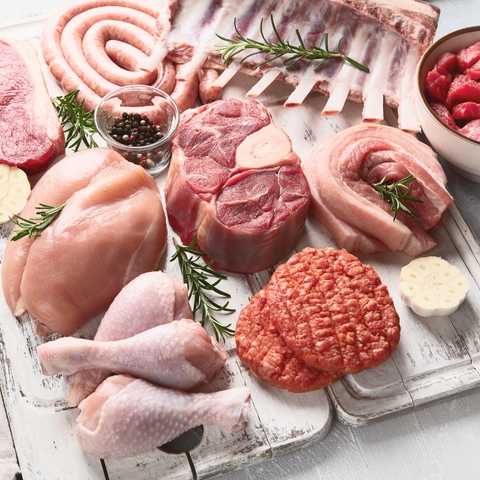
Your 7-Day Carnivore Diet Meal Planning Grocery List
This shopping list includes everything you need to make all of the dishes on the muscle-building and cutting meal plan. Remember, since you are eating so much animal protein, whenever possible opt for grass-fed options, such as grass fed beef.
One other note: When you are grocery shopping, make sure to stock up on your favorite spices and herbs, and even consider trying some new ones to experiment with, as this is a great way to add flavor variety to your meals.
You can really use whichever spices or herbs you like. Some ideas include salt, pepper, basil, parsley, sage, thyme, dill, cilantro, chives, tarragon, oregano, garlic, and ginger.
| MEAT & SEAFOOD: |
| Chicken Thighs |
| Bacon |
| Sirloin |
| Pork Loin |
| NY Strip |
| Ribeye |
| T-Bone |
| 80% Lean Ground Beef |
| Pork Chops |
| Lamb Chops |
| Salmon |
| Liver |
| Beef Tallow |
| Lard |
| EGGS & DAIRY: |
| Eggs |
| Butter |
| Ghee |
| Cheddar Cheese |
| Goat Milk |
| Goat Milk Yogurt |
Your 7-Day Carnivore Diet Plan For Muscle Building
Pair this meal plan with a good workout split, and you’ll be well on your way to building some serious muscle mass!
Monday:
Total daily nutrition breakdown: 2654 calories, 164g protein, 0g carbs, 222g fat
|
Breakfast: |
6 egg yolks |
Nutrition: |
|
Lunch: |
9oz ribeye |
Nutrition: |
|
Dinner: |
9oz NY strip |
Nutrition: |
Tuesday:
Total daily nutrition breakdown: 2511.5 calories, 161g protein, 0g carbs, 207.5g fat
|
Breakfast: |
3 egg yolks |
Nutrition: |
|
Lunch: |
9oz ribeye |
Nutrition: |
|
Dinner: |
8oz 80% lean ground beef |
Nutrition: |
Wednesday:
Total daily nutrition breakdown: 2467 calories, 140g protein, 11g carbs, 207g fat
|
Breakfast: |
6 pieces bacon 8oz goat milk 1tbs butter |
Nutrition: |
|
Lunch: |
8oz chicken thighs 3tbs ghee |
Nutrition: |
|
Dinner: |
9oz t-bone steak 4 pieces bacon 2tbs beef tallow |
Nutrition: |
Thursday:
Total daily nutrition breakdown: 2594 calories, 158g protein, 0g carbs, 218g fat
|
Breakfast: |
9oz NY strip 2 egg yolks 1tbs butter 1tbs beef tallow |
Nutrition: |
|
Lunch: |
8oz 80% lean ground beef 2 pieces bacon 1oz cheddar cheese |
Nutrition: |
|
Dinner: |
8oz lamb chops 3tbs butter |
Nutrition: |
Friday:
Total daily nutrition breakdown: 2548 calories, 160g protein, 0g carbs, 212g fat
|
Breakfast: |
6oz salmon 2tbs butter |
Nutrition: |
|
Lunch: |
8oz chicken thighs 2tbs lard |
Nutrition: |
|
Dinner: |
12oz NY strip 2tbs beef tallow |
Nutrition: |
Saturday:
Total daily nutrition breakdown: 2670 calories, 154g protein, 14g carbs, 222g fat
|
Breakfast: |
6 pieces bacon 8oz goat milk |
Nutrition: |
|
Lunch: |
10oz pork chops 3tbs butter |
Nutrition: |
|
Dinner: |
9oz salmon 3tbs ghee 2oz cheddar cheese |
Nutrition: |
Sunday:
Total daily nutrition breakdown: 2456 calories, 162g protein, 11g carbs, 196g fat
|
Breakfast: |
6 pieces bacon 8oz goat milk |
Nutrition: |
|
Lunch: |
10oz pork chops 3tbs butter |
Nutrition: |
|
Dinner: |
9oz salmon 3tbs ghee 2oz cheddar cheese |
Nutrition: |
Your 7-Day Carnivore Diet Meal Plan For Cutting
Following a cutting workout? Pair it with this weight loss carnivore meal plan for best results!
Monday:
Total daily nutrition breakdown: 1778 calories, 143g protein, 0g carbs, 134g fat
|
Breakfast: |
6 egg yolks 6 pieces bacon |
Nutrition: |
|
Lunch: |
6oz ribeye |
Nutrition: |
|
Dinner: |
9oz NY strip |
Nutrition: |
Tuesday:
Total daily nutrition breakdown: 1799 calories, 146g protein, 0g carbs, 135g fat
|
Breakfast: |
6oz ribeye |
Nutrition: |
|
Lunch: |
9oz NY strip |
Nutrition: |
|
Dinner: |
8oz 80% lean ground beef |
Nutrition: |
Wednesday:
Total daily nutrition breakdown: 1833 calories, 151g protein, 12.5g carbs, 131g fat
|
Breakfast: |
6 pieces bacon 8oz goat milk |
Nutrition: |
|
Lunch: |
8oz chicken thighs 1.5oz liver |
Nutrition: |
|
Dinner: |
9oz t-bone steak 4 pieces bacon |
Nutrition: |
Thursday:
Total daily nutrition breakdown: 1763 calories, 152g protein, 3g carbs, 127g fat
|
Breakfast: |
6oz sirloin 1 whole egg 1 egg yolk |
Nutrition: |
|
Lunch: |
8oz 80% lean ground beef |
Nutrition: |
|
Dinner: |
8oz lamb chops 3oz liver |
Nutrition: |
Friday:
Total daily nutrition breakdown: 1772 calories, 149g protein, 1.4g carbs, 130g fat
|
Breakfast: |
6oz salmon 1tbs butter |
Nutrition: |
|
Lunch: |
8oz chicken thighs |
Nutrition: |
|
Dinner: |
9oz NY strip 1.5oz liver |
Nutrition: |
Saturday:
Total daily nutrition breakdown: 1803 calories, 151g protein, 14g carbs, 127g fat
|
Breakfast: |
4 whole eggs 4oz 80% lean ground beef 170g goat milk yogurt |
Nutrition: |
|
Lunch: |
6oz ribeye 3oz liver |
Nutrition: |
|
Dinner: |
8oz lamb chops |
Nutrition: |
Sunday:
Total daily nutrition breakdown: 1796 calories, 150g protein, 11g carbs, 128g fat
|
Breakfast: |
6 pieces bacon 8oz goat milk |
Nutrition: |
|
Lunch: |
10oz pork chops
1tbs beef tallow |
Nutrition: |
|
Dinner: |
9oz salmon 1tbs butter |
Nutrition: |
What To Do After Following These 7-Day Carnivore Diet Meal Plans
After following the seven-day carnivore meal plan, you should have a good handle on how to set up carnivore meals. The key is to ensure you are eating the right amounts for your goals.
Play around with different cuts of meat, seasonings, and preparation methods until you find what you like best. Since the carnivore diet is limited in food options, finding little ways to make the meat taste better can go a long way in helping your adherence.
After sixty days, evaluate how you look, feel, and perform. If things are going well, you can continue a bit longer. Eventually, you may get to a point where you want more variety in your diet. Slowly add foods and assess how they make you feel when the time comes.
Once you have an idea of what foods make you feel good and those you should avoid, you can choose a more long-term diet that aligns with your needs. Some potential options may include the vegan diet, following a plan that emphasizes high protein vegetarian meals, macros counting, or even the 80 20 rule diet.
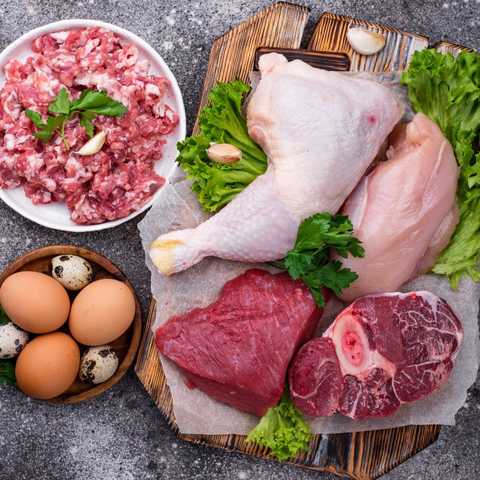
Tips For Getting Through The First Month of the Carnivore Diet
The carnivore diet is challenging. Here are a few tips to help you navigate the first month.
1) Take it One Day At A Time.
Starting a diet as restrictive as the carnivore diet is a daunting task. However, don’t start the diet with the idea that you must eat this way for the rest of your life. Take it one day at a time. If you have to, take it one meal at a time. Start by eating steak and eggs for breakfast and go from there.
2) Make Sure You Eat Enough Fat.
A standard error people make when starting a carnivore diet is not eating enough fat. Without adequate fat intake, you will feel hungry and tired from a lack of calories and carbs. Choose fatty cuts of meat and add butter, ghee, and lard if needed to add extra fat.
3. Don’t Try to Be Perfect.
The carnivore diet is highly restrictive. Chances are, you will experience a few hiccups along the way. Don’t stress about it. If you eat or drink something that doesn’t align with the plan, regroup and continue on.
4. Buy in Bulk.
A diet consisting of only animal-based foods can get expensive. To help cut down on cost, buy in bulk. You can get a giant pack of 80% lean ground beef at an affordable price and freeze the rest.
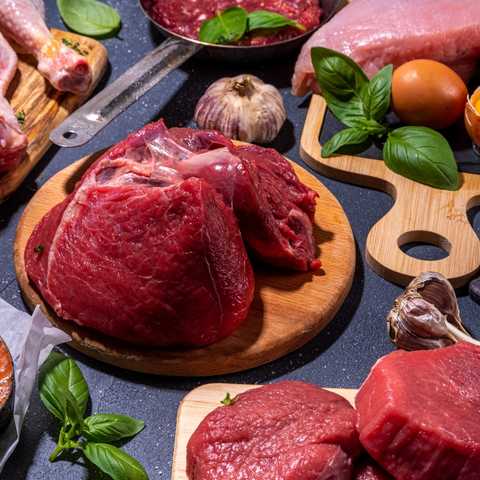
FAQs
Do you have remaining questions about following the carnivore diet? Let’s answer them here.
What foods can I eat on the carnivore diet?
When following the carnivore diet, you eat meat primarily. The diet consists of beef, bison, elk, venison, lamb, chicken, turkey, fish, shellfish, eggs, lard, bone marrow, bone broth, and organ meats. Butter, ghee, hard cheese, and other low-lactose dairy products are also allowed.
What should I eat during the first week of the carnivore diet?
The first week of the carnivore diet can be challenging. Start by following an 80-90% carnivore diet. In addition to animal products, you can add some salad greens with oil and vinegar dressing, avocado, and berries. As you get more comfortable with the diet, you can remove the non-animal products.
How many meals do you eat on a carnivore diet?
Typically, meal frequency is reduced on a carnivore diet. Most people following a carnivore diet only eat two or three meals per day.
What do carnivores eat for breakfast?
A popular carnivore breakfast is steak and eggs. You can also have eggs and bacon or eggs and ham.
Is eating a carnivore diet healthy?
Over the long term, a carnivore diet is not healthy. However, for a period, the carnivore diet can be beneficial for weight loss, muscle building and maintenance, and identifying food sensitivities.
How long should you be on a carnivore diet?
It’s recommended that you follow a strict carnivore diet eating only animal products for sixty days and then assess your progress, potentially following it for another month or two. From there, you can continue following a meat-heavy diet but may want to consider also adding fruits and veggies into the mix.
Interested in exploring other meal plans that incorporate meat? Check out the Keto Bodybuilding Meal Plan and the 7-Day Meal Plan For Muscle Gain for some more great meal plan options!
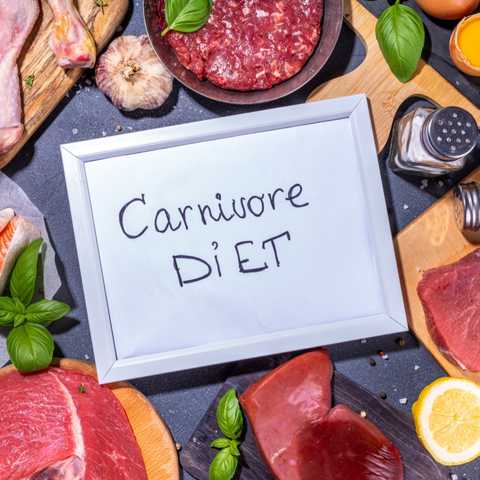
- Stonehouse, W.; Wycherley, T.; Luscombe-Marsh, N.; Taylor, P.; Brinkworth, G.; Riley, M. Dairy Intake Enhances Body Weight and Composition Changes during Energy Restriction in 18–50-Year-Old Adults—A Meta-Analysis of Randomized Controlled Trials. Nutrients. https://doi.org/10.3390/nu8070394
- Hoffman JR, Falvo MJ. Protein – Which is Best? J Sports Sci Med. PMID: 24482589; PMCID: PMC3905294.
- Zong G, Li Y, Wanders AJ, Alssema M, Zock PL, Willett WC, Hu FB, Sun Q. Intake of individual saturated fatty acids and risk of coronary heart disease in US men and women: two prospective longitudinal cohort studies. DOI: 10.1136/BMJ.i5796. PMID: 27881409; PMCID: PMC5121105.
- Morton, R. W., Murphy, K. T., McKellar, S. R., Schoenfeld, B. J., Henselmans, M., Helms, E., … Phillips, S. M. (2017). A systematic review, meta-analysis, and meta-regression of the effect of protein supplementation on resistance training-induced gains in muscle mass and strength in healthy adults. British Journal of Sports Medicine. https://doi.org/10.1136/bjsports-2017-097608





